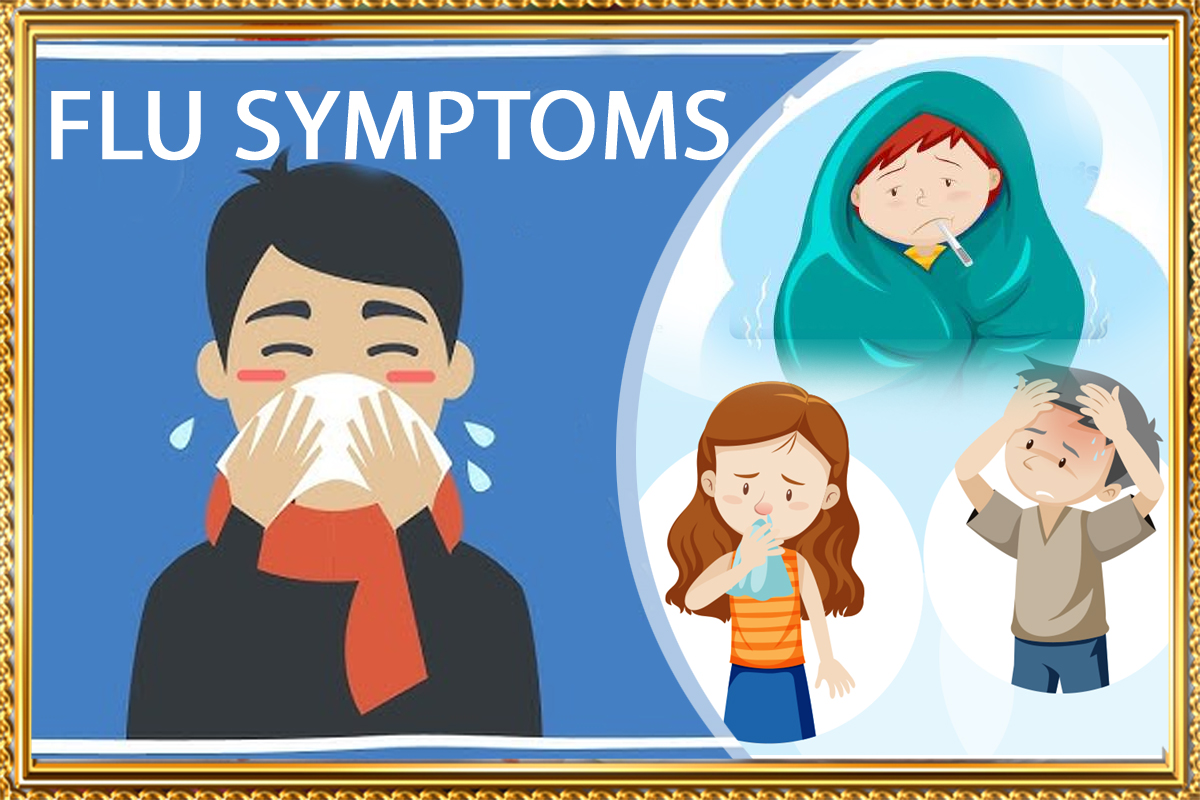- Home
- How to Recognize and Manage Flu Symptoms in 2025
How to Recognize and Manage Flu Symptoms in 2025

Discover the symptoms of the 2025 flu, from mild to severe, and learn how to manage them effectively. Understand when to seek medical attention, explore common and rare signs, and get answers to FAQs.
Can Flu Symptoms Last for Only One Day? Yes, mild flu symptoms can last just one day, especially in individuals with strong immune systems or those vaccinated against the flu. These cases are often mistaken for a common cold. However, lingering symptoms such as fatigue may persist for a few more days.
Flu Symptoms
What Are the Symptoms of the Flu?
Preventative Measures for Flu
Emerging Trends in Flu Management in 2025
Managing Flu in High-Risk Populations
Environmental Factors Affecting Flu Spread
Psychological and Social Impact of the Flu
Additional Points
Positive Aspects of Recognizing Flu Symptoms
Negative Aspects of Flu Symptoms
FAQs
CONCLUSION
Flu Symptoms
- What Does It Mean If Flu Symptoms Last 10 Days or More? Prolonged symptoms could indicate: • Exacerbation of chronic health conditions • A misdiagnosis (e.g., COVID-19 or another viral illness) If symptoms last more than 10 days or worsen over time, consult a healthcare provider.
- Why Are Flu Symptoms Worse at Night? • Body's Circadian Rhythms: Inflammatory processes are more active at night. • Lying Down: Congestion worsens when lying flat. • Reduced Distractions: Symptoms become more noticeable when not distracted by daily activities.
- How Many Diseases Have Flu-Like Symptoms? Flu-like symptoms can overlap with several illnesses, including: • COVID-19 • Common cold • Strep throat • Pneumonia • Mononucleosis • Meningitis • Certain types of cancer

What Are the Symptoms of the Flu?
- Common Symptoms: • Fever or chills • Cough • Sore throat • Runny or stuffy nose • Muscle or body aches • Headaches • Fatigue (tiredness) • Sometimes diarrhea or vomiting, more common in children
- Rare Symptoms: • Dizziness or confusion • Seizures (in rare, severe cases) • Worsening of chronic conditions like asthma
- Signs That Aren't Easily Noticeable: • Mild body aches mistaken for general fatigue • Slight cough without other major symptoms • Gradual onset of tiredness or weakness
Preventative Measures for Flu
- Hygiene Practices: Regular hand washing with soap, using hand sanitizers, and avoiding touching the face can significantly reduce the risk of infection.
- Healthy Lifestyle: Maintaining a strong immune system through a balanced diet, regular exercise, and adequate sleep is crucial.
- Public Health Campaigns: Continued awareness efforts to educate people about flu symptoms, vaccines, and preventive measures are essential.
Emerging Trends in Flu Management in 2025
- Technological Innovations: Wearable health monitors that detect early symptoms or measure body temperature trends.
- Telemedicine: Increased use of virtual consultations for early diagnosis and treatment.
- Personalized Vaccines: Advances in vaccine technology allow for customized formulations based on genetic factors or regional virus strains.
Managing Flu in High-Risk Populations
- Elderly and Immuno compromised Individuals: These groups benefit from higher-dose flu vaccines and early antiviral interventions.
- Pregnant Women: Special care is needed as the flu can pose risks to both mother and baby.
- Children: Educating parents about symptom recognition and the importance of vaccination is critical.
Environmental Factors Affecting Flu Spread
- Climate Change: Shifts in temperature and humidity can influence flu virus survival and transmission rates.
- Urbanization: Crowded living conditions and public transportation can accelerate virus spread.
- Global Travel: Increased travel heightens the risk of spreading flu strains across regions.
Psychological and Social Impact of the Flu
- Mental Health: Prolonged recovery or severe cases can contribute to anxiety or depression.
- Social Dynamics: Misinformation about flu symptoms or vaccine safety can lead to fear or stigma.
- Community Support: Encouraging community solidarity through support groups or volunteer assistance for affected families.
Additional Points
- Flu Research and Future Directions: • Strain Prediction Models: Using AI to forecast dominant flu strains for more effective vaccine development. • Universal Flu Vaccine: Research continues on creating a single vaccine to protect against all influenza strains. • Antiviral Resistance: Monitoring and addressing the emergence of flu strains resistant to current antiviral medications.
- Advances in Flu Diagnosis: • Rapid Testing: Improved diagnostic tools provide results within minutes, distinguishing between flu and similar illnesses like COVID-19. • At-Home Testing Kits: Affordable, user-friendly kits enable individuals to test themselves without visiting healthcare facilities. • AI-Assisted Symptom Analysis: Mobile apps can analyze symptoms and suggest a likelihood of flu, prompting timely medical consultations.
- Alternative Treatments and Supportive Care: • Herbal Remedies: Increased interest in herbal teas, supplements, and natural antivirals like elderberry and echinacea. • Probiotics: Research suggests that gut health plays a role in immune response, making probiotics a supportive care option. • Acupuncture: Some people use acupuncture to alleviate flu symptoms like body aches and fatigue.
Positive Aspects of Recognizing Flu Symptoms
- Early Detection: Quick action can prevent severe complications.
- Improved Recovery: Early treatment, such as antiviral medications, shortens illness duration.
- Awareness and Prevention: Understanding symptoms helps limit the spread through timely isolation.}
Negative Aspects of Flu Symptoms
- Misdiagnosis Risks: Overlapping symptoms with other illnesses can lead to delayed treatment.
- Impact on Daily Life: Flu symptoms can disrupt work, school, and personal responsibilities.
- Complications: Severe cases may lead to hospitalization or chronic health issues.
FAQs
- Can you have the flu without symptoms? Yes, asymptomatic cases are possible, especially in vaccinated individuals.
- Are mild symptoms common in the 2025 flu? Mild symptoms are more common in individuals with prior immunity or vaccination.
- What does it mean if flu symptoms worsen before improving? This could indicate the body’s immune response fighting the virus or the onset of a secondary infection.
- Where can I find updated information on flu symptoms? Consult reputable sources like the CDC, WHO, or your local health department for up-to-date information.
Workplace and School Policies: • Remote Work Options: Encouraging employees to work from home when sick to reduce the spread of flu in workplaces. • Flexible Attendance Policies: Schools implement lenient sick-day policies to discourage sending symptomatic children to class. • Vaccination Drives: Organized flu vaccination campaigns in workplaces and educational institutions.
Monitoring and Controlling Flu Outbreaks: • Real-Time Tracking: Apps and websites track flu outbreaks in specific areas, helping individuals take preventive measures. • Community Health Surveillance: Collaboration between governments and healthcare providers for early outbreak detection. • Isolation Protocols: Updated guidelines for isolating infected individuals in hospitals or at home to prevent transmission.

Conclusion: Understanding flu symptoms and their variations in 2025 is crucial for timely action and prevention. While most cases remain mild, it’s important to monitor for severe signs and seek medical attention when needed. Staying informed, getting vaccinated, and practicing good hygiene are key to managing flu season effectively.
















Post a comment